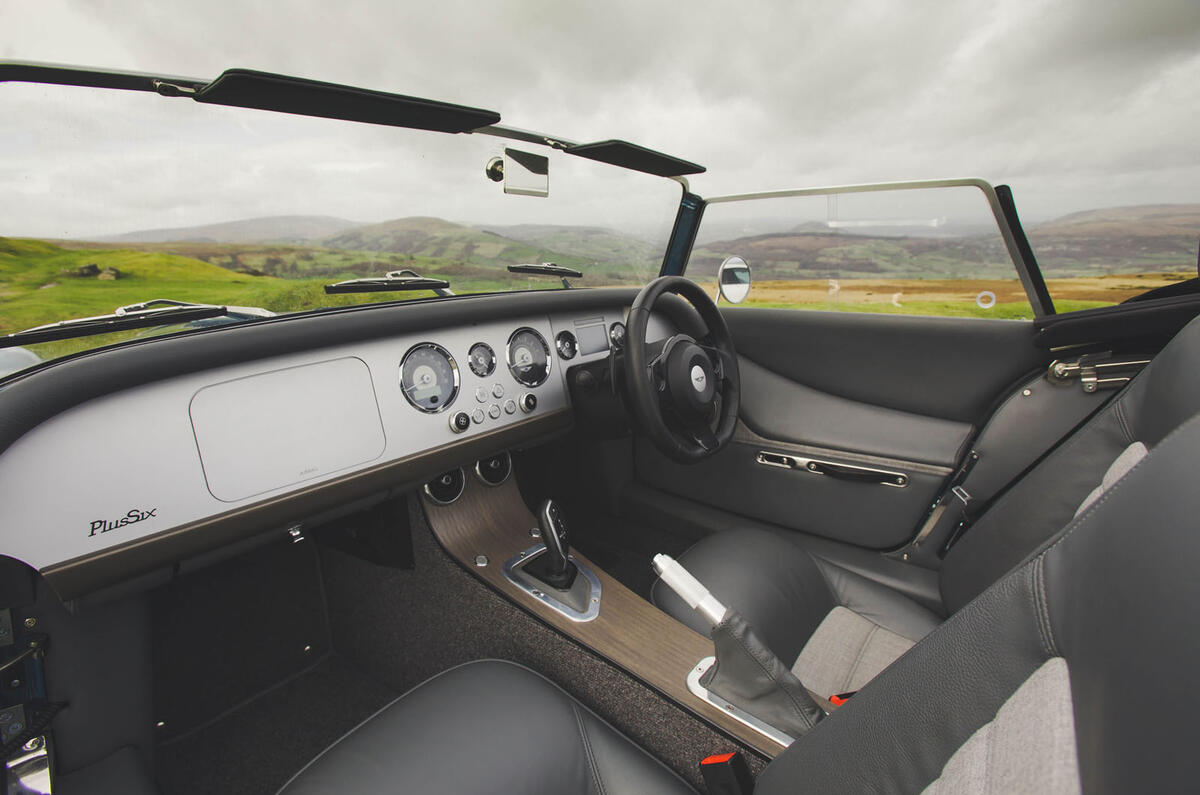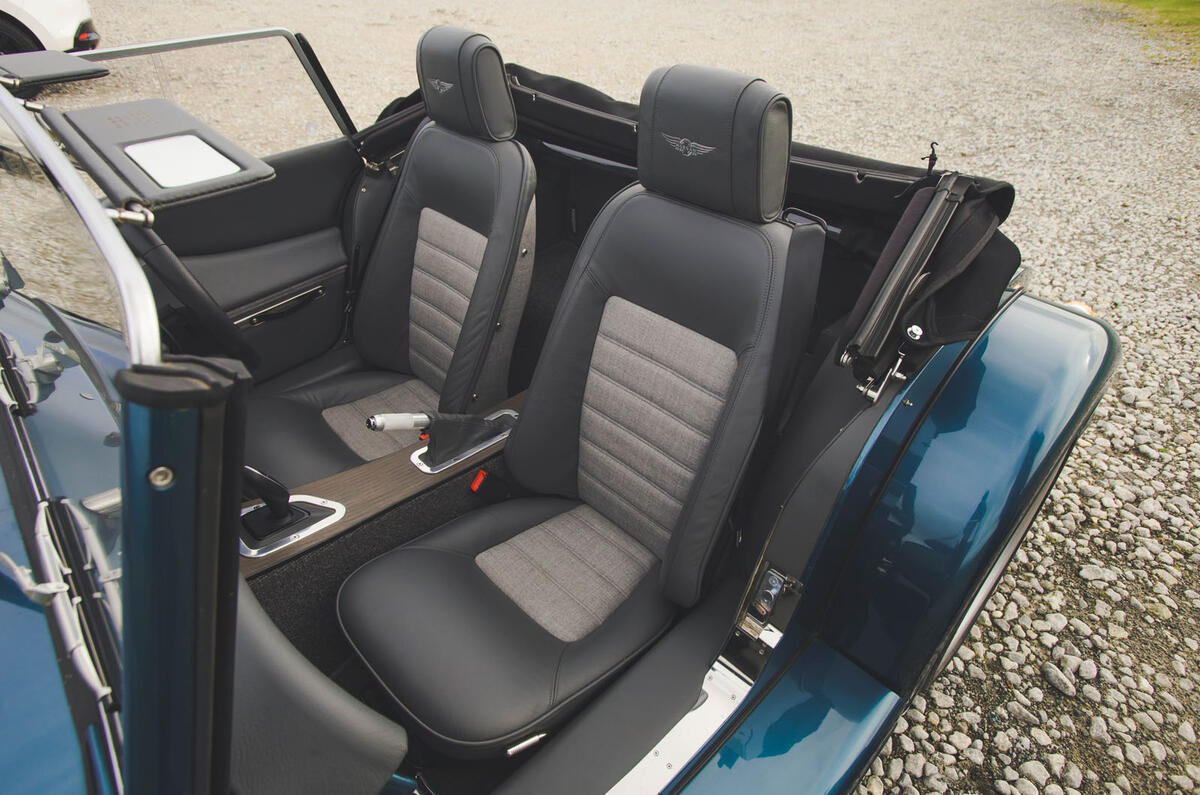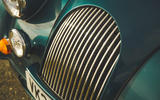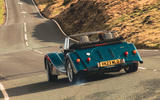The biggest interior change compared with earlier Plus Sixes comes from the fitting of those airbags. That has required a redesign of the dashboard, although it’s sympathetic enough that you probably wouldn’t notice if you’re not intimately familiar with the pre-update style. The steering wheel always looked like it had an airbag in it anyway.
The main dashboard panel, available in black, silver or body-colour aluminium, is now flat, with the space formerly taken up by a cubby now filled by the passenger airbag. There is at least a small glovebox to compensate.
The centre of the dashboard is still taken up by the analogue clock, tacho and speedo. The latter is mostly ornamental in practice, as you tend to glance at the subtly enlarged digital display in front of you, but then a Morgan is the kind of car that’s complemented by a bit of ornamentation.
The push buttons for the secondary controls work well enough, as do the rotary knobs for the heating and ventilation. That said, it’s odd that there are no telltales of how high or low you’ve set the fan and heating; you need to look at the driver’s display for that.
It’s unfortunate that Morgan hasn’t taken the opportunity to find an alternative for the PSA-sourced shift paddles and column stalks. We like the column-mounted paddles in Ferraris and Alfa Romeos, because they’re big and satisfying to use, but the flimsy plastic ears in the Morgan can be hard to find when you have some steering lock on. Equally, the stalks feel out of step with the obvious craftsmanship in the rest of the interior.
And rest assured, there is plenty of that. You can choose from a range of veneers for the centre console and the rail under the dashboard, the leather feels wonderfully soft and in this updated model there’s more scope to mix things up with some interesting fabrics, which now line redesigned door cards.
Overall, this is a superbly designed interior, one that is the antithesis of the modern trend of hitting you over the head with technology. Instead, this does have the essentials (air-con, heated seats and a Bluetooth speaker system are optional) but hides them from view.
It also provides you with a classic sports car driving position: low, with your legs outstretched and the steering wheel (adjustable for rake and reach) close to your chest. Unusually, it favours taller drivers, who have an abundance of leg room. Shorter testers complained that the steering wheel was slightly too close for comfort.
The seats are manually adjustable, and the lever for the backrest has been repositioned to be easier to reach. On the Comfort Plus seats in our test car, there were two hand pumps for the lumbar and thigh support. They proved quite comfortable but caused some slight upper backache on very long drives.
For those long drives, you will need to pack carefully, because there is no boot as such. The shelf behind the seats forms the main storage area and will hold a pair of soft bags. For anything more, you will either need to kick out your passenger or go for the optional luggage rack.

Multimedia system
An infotainment system? In a Morgan? Well, sort of. There are no touchscreens to be found here, but one of the headline changes for 2023 was the option of a Sennheiser audio system. You don’t get any speakers as standard, the basic Bluetooth speaker system is £395 and the Sennheiser system costs £2995.
Sound comes from four conventional speakers in the doors and the rear storage area, and four invisible speakers, of which three are behind the dashboard and one in the lower compartment panel for the bass.
The trouble is that no matter how good the audio system might be, it’s always fighting a losing battle with wind noise in a Plus Six. At low speeds, it’s genuinely pleasurable, but on the motorway you have to strain to understand a podcast.
The Bluetooth connection proved simple and reliable, and although we found the hidden volume under the dashboard slightly odd, it does the job.
























































